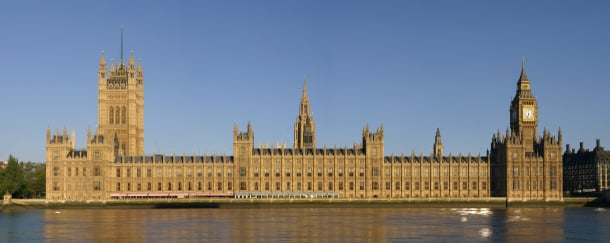BLOG
BUDGET APRIL 2016 TAX CHANGES

In this blog we focus on tax changes announced in the March 2016 Budget and other measures taking effect from 6 April 2016.
THE KEY POINTS FROM BUDGET 2016
One of the main themes of the Chancellor’s March 2016 Budget was to ensure that the next generation inherits a strong economy, is better educated, and grow up fit and healthy. His proposed “sugar tax” on the soft drinks industry will be used to fund longer school days for those that want to offer their pupils a wider range of activities, including extra sport.
He again stressed his prudence in concentrating on debt repayment and the importance of “mending the roof while the sun shines”, although he acknowledged that there were numerous factors that could impact on his “bullish” growth forecasts and promises of future budget surpluses.
There will be further changes affecting savers and he hinted that there could be yet further changes to pensions, but not for the time being.
PERSONAL ALLOWANCES
As already announced, the basic personal allowance for 2016/17 will be £11,000. The March Budget announced that this will increase to £11,500 for 2017/18. Remember that if your adjusted net income exceeds £100,000 the personal allowance is reduced by £1 for every £2 over £100,000 giving an effective rate of 60% on income between £100,000 and £122,000 for 2016/17. Contact us for advice on planning to avoid this 60% rate.
INCOME TAX BANDS
The 20% basic rate band for 2016/17 will be £32,000 and for 2017/18 it was announced that this will be £33,500. This means that you will pay 40% tax if your taxable income exceeds £43,000 for 2016/17 and the threshold will be £45,000 for 2017/18. The 45% top rate continues to apply to taxable income over £150,000 for 2016/17.
FURTHER CHANGES TO ISAs
The current £15,240 ISA limit is frozen for 2016/17. The Junior ISA limit remains at £4,080 for 2016/17.
The Chancellor announced that the ISA allowance will increase to £20,000 from 6 April 2017 and that from the same date there will be a new “Lifetime ISA” account where investors aged between 18 and 40 who save up to £4,000 a year will have 25% (up to £1,000) added by the government. Those who have been saving in the new “Help to Buy” ISA will be able to transfer their savings to this new account and use the savings to help them buy their first home or use them to provide an additional pension. These may in future replace traditional pension saving schemes.
PENSION ALLOWANCES REDUCED
There was much speculation about further major changes to pensions such as taxing the lump sum and limiting tax relief, but these did not materialise.
From 6 April 2016 the pension fund lifetime allowance will be reduced from £1.25million to £1million. Transitional protection for pension rights already over £1million will be introduced alongside this reduction to ensure the change is not retrospective.
As already announced, those with income in excess of £150,000 will have the normal £40,000 annual allowance reduced by £1 for every £2 over £150,000.
£1,000 SAVINGS INCOME TAX FREE 2016/17
From April 2016, a tax-free allowance of £1,000 (or £500 for higher rate taxpayers) will be introduced for the interest that people earn on savings. If they are a basic rate taxpayer and have a total income up to £43,000 a year, they will be eligible for the £1,000 tax-free savings allowance.
If they are a higher rate taxpayer and earn between £43,000 and £150,000, they will be eligible for a £500 tax-free savings allowance, but those with income in excess of £150,000 a year will be taxed in full on their interest income.
As a result of these changes banks and building societies will pay interest gross from 6 April 2016.
NEW DIVIDEND RULES START 6 APRIL 2016
It was announced in the Summer 2015 Budget that there would be a £5,000 tax free dividend allowance from 6 April 2016 and that once used the rate of tax on dividend income would increase by 7.5%. This means that basic rate taxpayers will pay 7.5% tax on dividend income, higher rate taxpayers 32.5% and additional rate taxpayers 38.1%. Note that from 6 April 2016 dividends will no longer carry with them a 10% notional credit. This is the reason why dividends received by basic rate taxpayers were effectively tax free up to 5 April 2016.
32.5% TAX ON LOANS TO PARTICIPATORS FROM 6 APRIL 2016
Where a “close” company controlled by 5 or fewer shareholders (participators) makes a loan to one of those persons the company is required to pay tax to HM Revenue and Customs. The rate of tax increases from 25% to 32.5% from 6 April 2016 in line with the dividend rate for higher rate taxpayers. This tax is not payable if the loan is cleared within 9 months of the end of the accounting period and will continue to be repaid to the company if the loan is repaid or written off after the 9 month period.
CAPITAL TAX RATES
An unexpected announcement was a reduction in the rate of capital gain tax from 6 April 2016 down from 18% to 10% for basic rate taxpayers and 28% down to 20% for higher rate taxpayers. The 18% and 28% rates remain for disposals of residential property.
There has been no change in the inheritance tax nil rate band which remains at £325,000 until 2020 although an additional nil band will be available from 6 April 2017 where the main residence or assets of an equivalent value are left to direct descendants. This additional relief will be protected where the person downsizes to a less valuable property from 8 July 2015 onwards. Please contact us if you would like to discuss inheritance tax planning.
FURTHER CHANGES TO CGT ENTREPRENEURS’ RELIEF
Entrepreneurs’ relief (ER) will be extended to external investors in unlisted trading companies. This new investors’ relief will apply a 10% rate of CGT to gains accruing on the disposal of ordinary shares held by individuals. These shares must be subscribed for by the claimant and acquired for new consideration on or after 17 March 2016. The shares must have been held for a period of at least three years starting from 6 April 2016 and there will be a lifetime cap of £10 million.
In the 2014 Autumn Statement it was announced that it is no longer possible to claim CGT entrepreneurs’ relief against the gains arising on the sale on or after 3 December 2014 of goodwill by a sole trader or partnership to a limited company in which they have a controlling interest. That restriction was then legislated in Finance Act 2015. It has now been announced that the relief will still be available provided that the transferor does not receive more than 5% of share capital or voting rights in the acquiring company.
LOWER CORPORATION TAX RATES
A single corporation tax rate of 20% has applied since 1 April 2015 regardless of the level of the company’s profits. In the Summer 2015 Budget it was announced that this would reduce to 19% in April 2017. The Chancellor has now announced that this will now be reduced to 17% from 1 April 2020.
£1,000 TAX FREE FOR “MICRO -ENTREPRENEURS”
From April 2017, the government will introduce new allowances for the first £1,000 of trading income and the first £1,000 of property income. Those with income below this level will no longer need to declare or pay income tax on that income. Those with income above the allowance will also benefit by deducting the relevant allowance from their gross income. This appears to be aimed at people starting small businesses on E-Bay and renting on air B&B.
NEW CORPORATE TAX LOSS RULES
There will be fundamental changes to the rules for setting off corporate tax losses starting on 1 April 2017. For losses incurred on or after 1 April 2017, companies will be able to use carried forward losses against profits from other income streams or from other companies within a group. However, large companies with profits in excess of £5m will only be allowed to offset brought forward losses against 50% of the amount of profit in each future period.
INTEREST RELIEF RESTRICTED FOR MULTI- NATIONAL COMPANIES
From 1 April 2017, to restrict profit shifting by multi-nationals, the UK will be introducing a Fixed Ratio Rule limiting corporation tax deductions for net interest expense to 30% of a group’s UK earnings before interest, tax, depreciation and amortisation (EBITDA). This is in line with the rules that exist in several other countries and will address profit-shifting through interest charges. Note that this restriction will not apply where the net UK interest expense is less than £2 million.
SDLT CHANGES
The rules for calculating the Stamp Duty Land Tax (SDLT) charged on purchases of non-residential properties and transactions involving a mixture of residential and non-residential properties changed with effect from Budget Day to bring them more into line with the mechanism for charging SDLT on residential property. On and after 17 March 2016, SDLT will be charged at each rate on the portion of the purchase price which falls within each rate band. The new rates and thresholds for freehold purchases and leases premiums are:

Note also that the additional 3% SDLT charge on additional residences commences on 1 April 2016.
TAX RELIEF ON SMALL DONATIONS TO CHARITY INCREASED TO £8,000
The Gift Aid Small Donations Scheme (GASDS) allows charities to treat small donations such as those in collecting boxes as if Gift Aided.
With effect from 6 April 2016 the maximum annual donation amount which can be claimed through GASDS will be increased from £5,000 to £8,000 allowing charities and Community Amateur Sports Clubs to claim Gift Aid style top-up payments of up to £2,000 a year.
VAT REGISTRATION LIMIT £83,000
The VAT registration limit has been increased by £1,000 to £83,000 from 1 April 2016. The de-registration limit also increased by £1,000 to £81,000.
Inform are here to help you so please contact us if you need further information on any of the topics covered or any other tax related matters.




.jpg?width=1500&height=1000&name=amy-hirschi-K0c8ko3e6AA-unsplash-(5).jpg)

